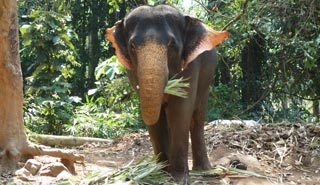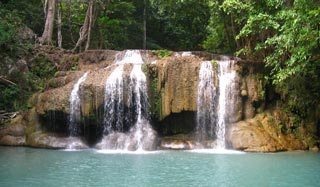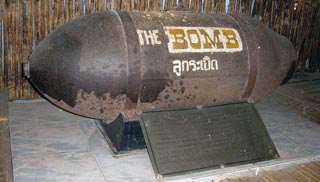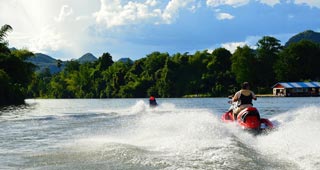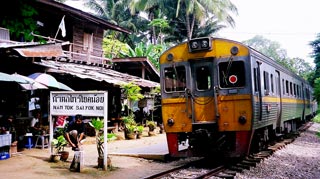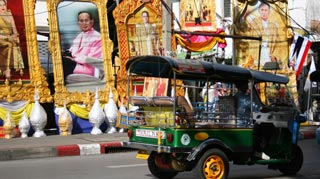Death Railway Bridge
The Bridge over the River Kwai became famous all over the world when it was featured in the famous Oscar-winning movie and book. It's estimated that up to 250,000 South-east Asian forced labourers, (Indians, Chinese, Malays, Burmese and Thais), and 61,000 Allied POW's were forced to work on the railway. It is also estimated that 90,000 Asians and 16,000 POW's tragically met their deaths here. The bridge was a vital part of the Death Railway, which was built between October 1942 and October 1943, linking Burma and Thailand by rail as a supply route for the Japanese war machine in Burma. The railway runs to the Burma Base Camp 415 kilometres away, with 294 kilometres of it in Thailand. An iron bridge was brought from Java by the Japanese armed forces during WWII and reassembled by POW labour. The bridge today is not particularly spectacular to look at - indeed the original bridge, which was built by the Allied POW's, is no longer there. Three of the spans were destroyed by Allied bombing, and in 1945, they were replaced with two angular steel spans. The wooden spans were also replaced by steel. Some of the original parts of the bridge can be seen in the war museum. The bridge is a major tourist destination and is swarming souvenir sellers. Twenty years ago, visitors took their lives into their hands by trying to traverse a few railway lines along the bridge for a photo shoot, these days wooden walkways have been constructed alongside the rail lines with several 'side' platforms. This means that the bridge can be crossed safely on foot with the platforms used as viewing points and also to avoid a small tourist train that runs back and forth across the bridge. You get outstanding views from the centre of the bridge, and the nearby museum contains many photographs, relics and illustrations of how the men must have suffered to build it. The short train journey over the bridge to Nam Tok costs 100B and runs four times daily. There is some splendid scenery en route, including Tham Krasae cave, a viaduct and the Sai Yok Noi Waterfall (see separate highlight, Train over Death Railway Bridge). Every November or early December, a festival is organised to mark the Allied bombing of the bridge on November 28, 1944. A firework display and a spectacular light and sound show are the highlights of the festival. The Bridge is located at the northern end of town, about a 20-minute walk from the city centre.
Kanchanaburi
Kanchanaburi












